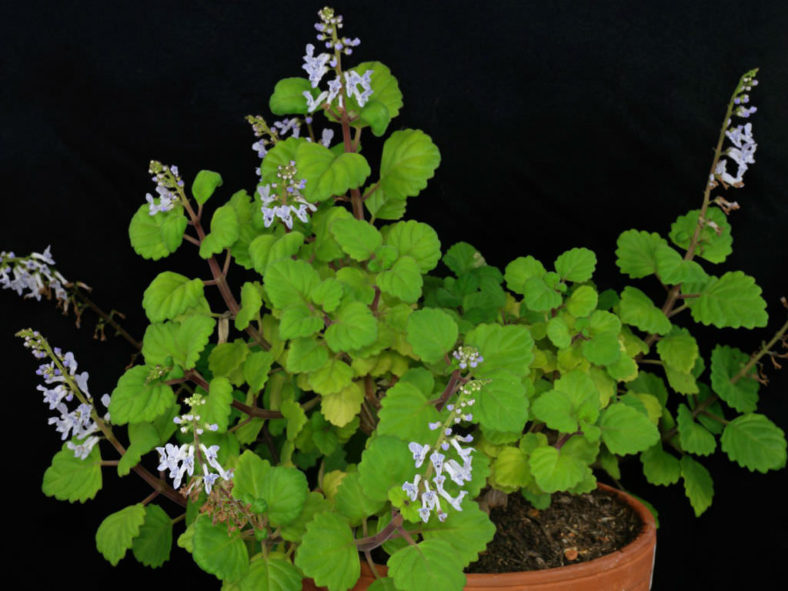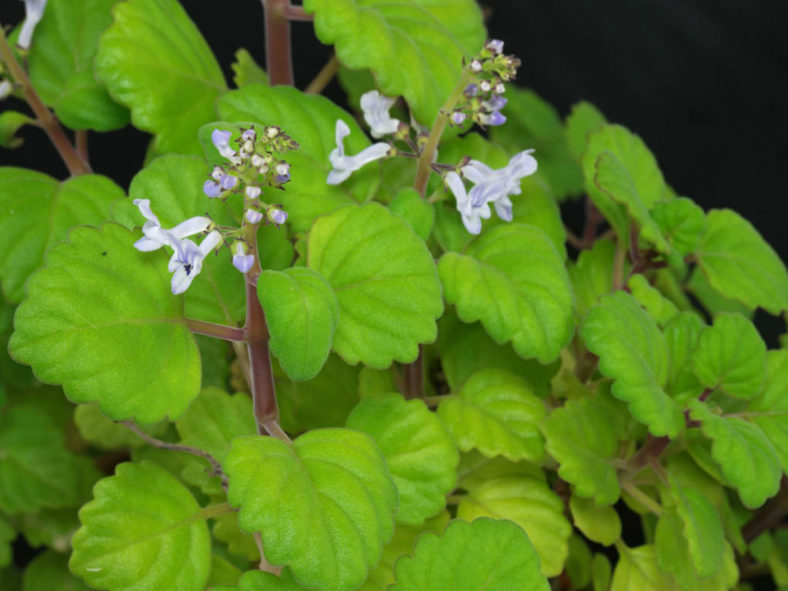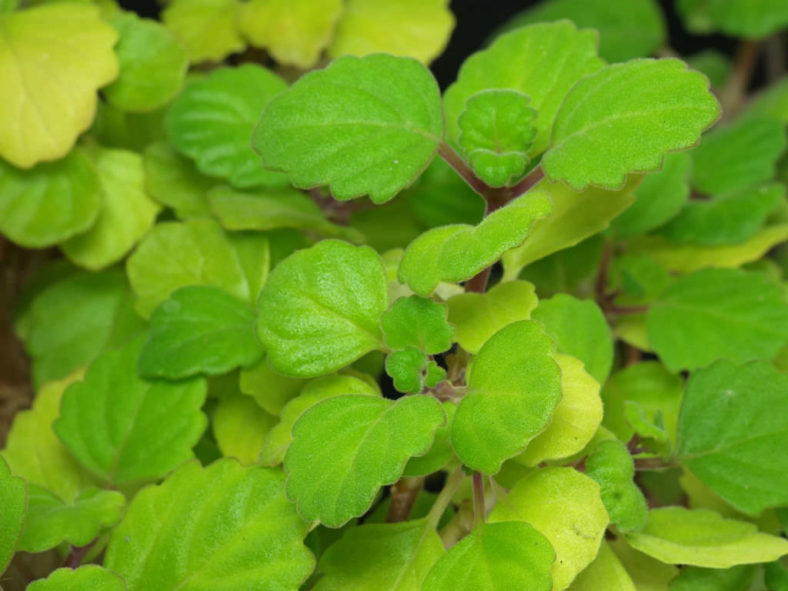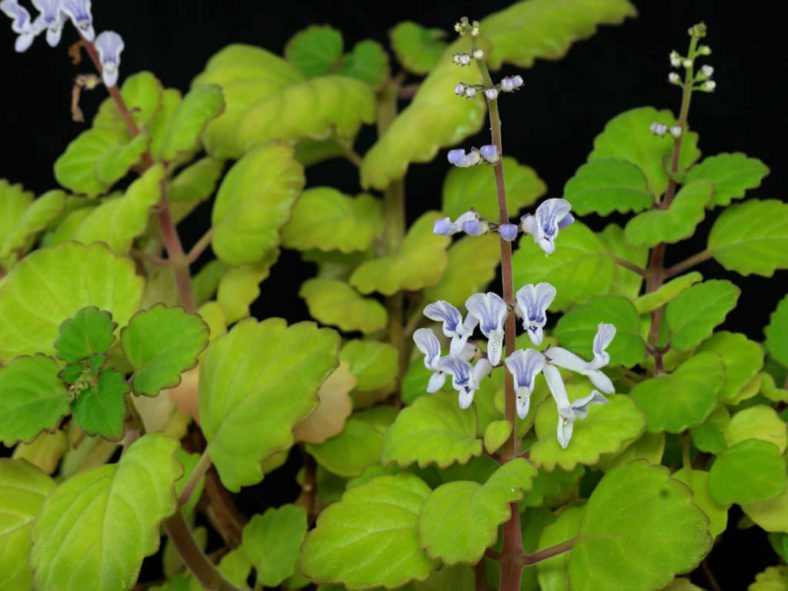Scientific Name
Plectranthus verticillatus (L.f.) Druce
Common Name(s)
Swedish Ivy, Swedish Begonia, Whorled Plectranthus, Creeping Charlie, Gossip Spurflower, Money Plant
Synonym(s)
Plectranthus nummularius, Plectranthus thunbergii, Ocimum racemosum, Ocimum verticillatum
Scientific Classification
Family: Lamiaceae
Subfamily: Nepetoideae
Tribe: Ocimeae
Genus: Plectranthus
Description
Plectranthus verticillatus is a semi-succulent plant with branching, procumbent to ascending stems that bear softly to distinctly succulent leaves. The stems can grow up to 4 feet (1.2 m) long. The leaves are often glossy, light to dark green above, sometimes deep purple below, and covered with short, soft hair. They are round to obovate, with 3 to 6 pairs of teeth along margins, up to 3.6 inches (9 cm) across, and attached to the stem by a rectangular petiole.
The flowers are white to pale mauve with a few mauve spots on the upper lip or freely speckled with purplish spots. They appear sporadically throughout the year but more abundantly in spring and late fall.

Hardiness
USDA hardiness zones 10a to 11b: from 30 °F (−1.1 °C) to 50 °F (+10 °C).
How to Grow and Care
Plectranthus species are easily cultivated and require little extra attention or special treatment. They enjoy well-composted soil and, as a rule, thrive in semi-shade or cool positions on south-facing aspects. These plants are ideally suited to grow under the shade of trees. They are generally shallow-rooted and enjoy adequate water, but Plectranthus plants store water in their stems and are resistant to prolonged periods of drought.
These plants are often grown for their attractive foliage, flowers, or both and vary in their growth forms from dense prostrate ground covers to sub-shrubs and large shrubs.
Although they are frost tender, Plectranthus are usually grown in shady, protected places and, as such, are afforded some protection from frost. Frost does not affect flowering because they all flower at the end of the growing season. If the plants are affected by frost, they can be cut back at the end of winter and will grow out rapidly. Once the plants have been established for a year or more, they become woodier at the base and are more resistant to frost damage.
See more at How to Grow and Care for Plectranthus.
Origin
Plectranthus verticillatus is native to South Africa, Swaziland, and Mozambique.
Links
- Back to genus Plectranthus
- Succupedia: Browse succulents by Scientific Name, Common Name, Genus, Family, USDA Hardiness Zone, Origin, or cacti by Genus
Photo Gallery
Click on a photo to see a larger version.


